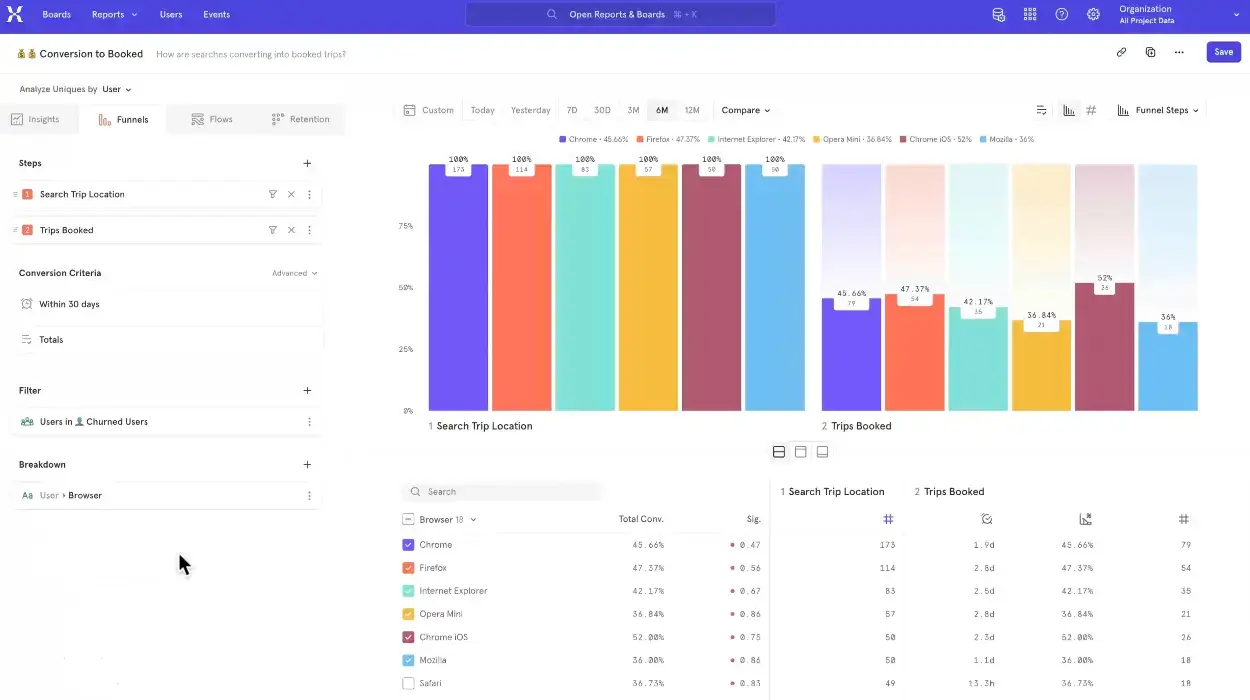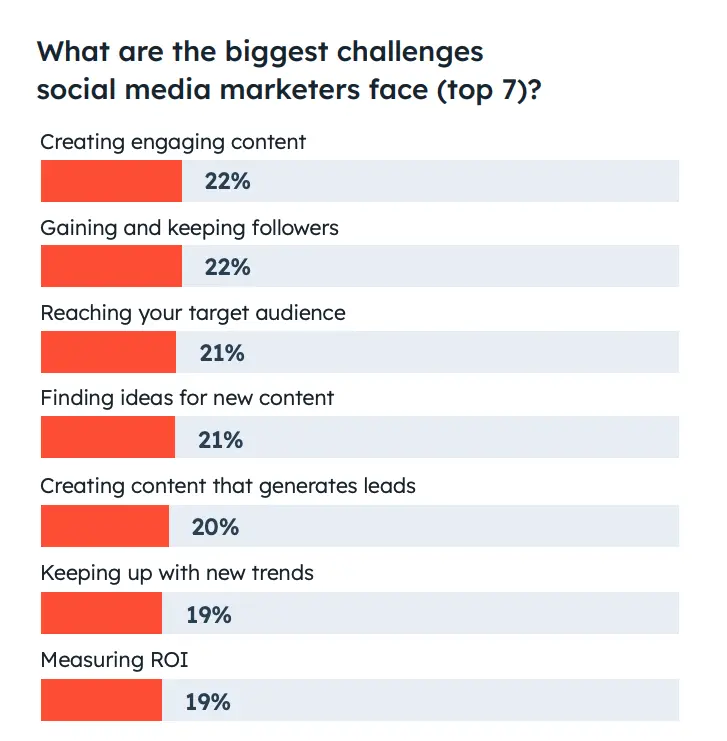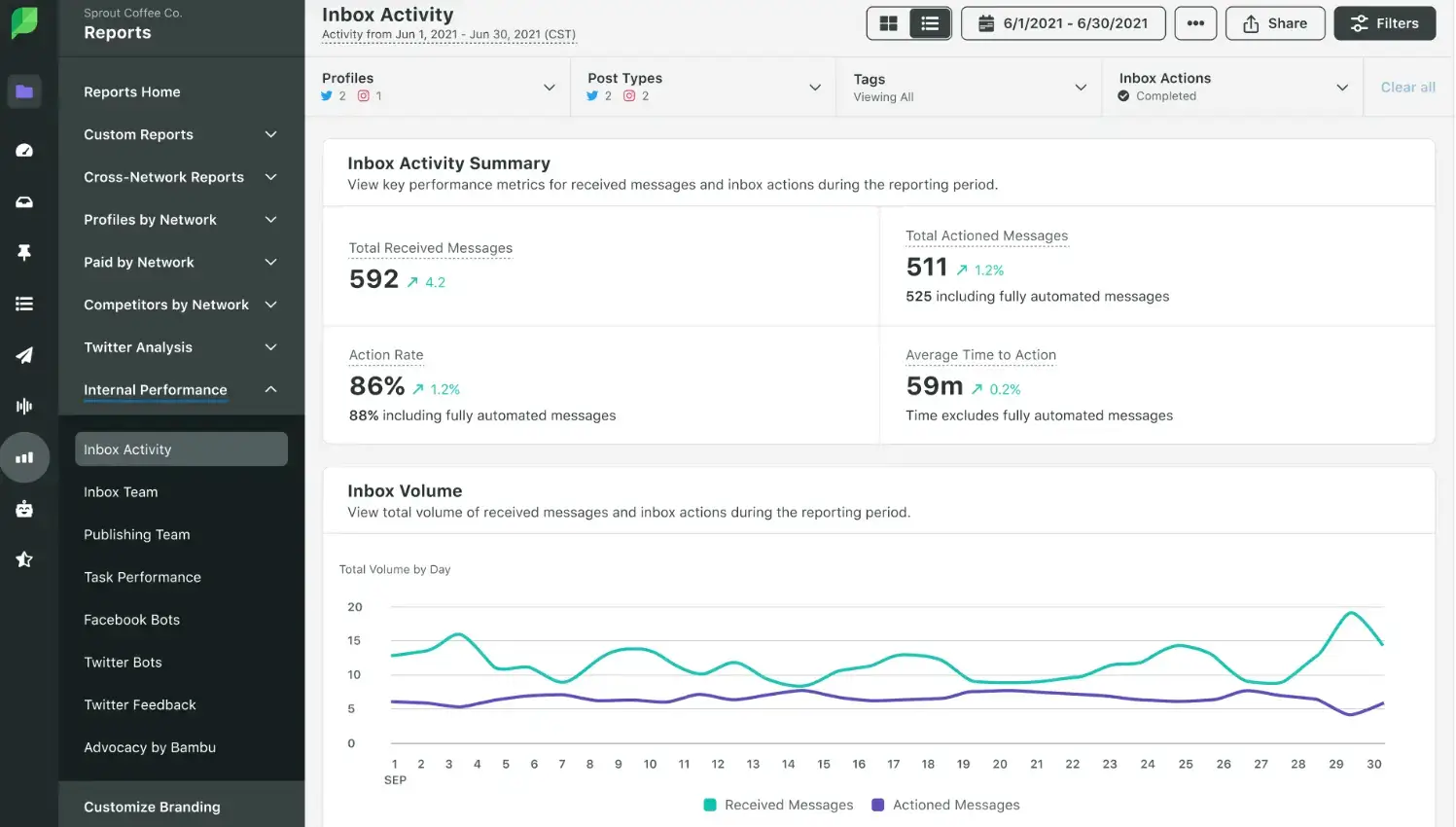In today's digital age, having a solid online presence is essential for the growth and success of any small business. However, more than simply having a website or social media account is required.
To truly maximize your small business potential, you need to leverage the power of digital marketing analytics.
By collecting and analyzing data, you can gain insights into your target audience, track your progress toward specific goals, and make data-driven decisions to improve your marketing strategies.
This article will discuss digital marketing analytics in 2023, how these tools can help your small business grow, and the key steps you need to take to get started.
How Can Digital Marketing Analytics Help My Business?
Digital marketing analytics collects, measures, and analyzes data from various digital marketing channels such as social media, email, websites, and search engines.
You can track and measure key performance indicators (KPIs) such as website traffic, conversion rates, and customer engagement using analytics tools.
7 Efficient Methods to Leverage Digital Marketing Analytics
- Understand your target audience
- Use proper analytics software
- Collect the correct data
- Set the right goals
- Keep track of your benchmarks
- Evaluate regularly
- Automate where possible
Digital marketing analytics involves using data analysis tools and techniques to measure and evaluate the effectiveness of your online marketing efforts. Let’s look more into each method.
1. Understand your target audience
Understanding your target audience is critical to shaping your digital marketing strategy. Demographics, psychographics, and behavior data play a significant role in gathering insights into your audience.
Demographic data provides information about your audience's age, gender, location, income, education, and other relevant characteristics.
Psychographic data, including insights from DISC personality assessment, provides insights into your audience's personality traits, values, attitudes, and interests. Behavior data provides insights into your audience's actions and interactions with your brand.
Here are some tips for conducting market research to identify and target your ideal customers:
- Conduct surveys to understand your customers' preferences, behaviors, and expectations.
- Use social media listening to monitor social media conversations about your brand, industry, or competitors. By doing this, you can identify trends, preferences, and feedback for brand management purposes.
- Analyze website traffic to track the most popular pages, how users engage with your content, and which products sell the most.
- Monitor click-through rates to understand your marketing campaign's effectiveness and make necessary adjustments.
- Analyze social media engagement to understand which platforms and content are most popular among your target audience.
A local coffee shop used surveys and social media listening to understand customers' preferences and needs. Many customers preferred dairy-free options and outdoor seating.
As a result, the coffee shop introduced soy and almond milk to its menu and promoted its outdoor seating. It also found that its customers like to work from the coffee shop, so it promoted its Wi-Fi and comfortable seating as a workspace.
By doing this, the coffee shop delivered a better customer experience and increased sales.
2. Use proper analytics software
Using the right analytics software is crucial in measuring the success of your digital marketing strategy. It involves choosing the right tools to help you gather and analyze data accurately.
Here are some of the top tools to consider:
- Google Analytics: a free tool that provides comprehensive data about your website traffic and user behavior.
- Kissmetrics: a paid tool that focuses on user behavior and helps you track their actions across different devices and channels.
- Mixpanel: a paid tool that focuses on user behavior and helps you understand how users interact with your app or website.
Choosing the right tool will depend on your business needs and budget. For example, a small e-commerce business may benefit from using Google Analytics to track website traffic and sales.
At the same time, a software company may prefer Mixpanel to track user behavior within their app.
Suppose a local boutique clothing store wants to increase online sales. It uses Google Analytics to track its website traffic and analyze customer behavior.
They set up goals in Google Analytics to track purchases and abandoned carts. They use the data to identify their top-performing products and adjust their marketing strategy to promote them.
They also use the data to determine where customers drop off in purchasing and improve their website to reduce cart abandonment.
By using the right analytics software, they can increase their online sales and grow their business.
3. Collect the correct data
Collecting the correct data is crucial in making informed decisions about your digital marketing strategy. It involves identifying the most relevant data to your business goals and KPIs. Here are some of the top tools to consider:
- Google Analytics: a free tool that provides comprehensive data about your website traffic and user behavior.
- SEMrush: a paid tool that helps you analyze your website's SEO performance and track keyword rankings.
- Hootsuite Insights: A paid tool that helps you monitor social media conversations and track brand mentions
Choosing the right tool will depend on your business needs and budget. For example, a small business that relies heavily on social media marketing may benefit from using Hootsuite Insights or sentiment analysis tools to monitor conversations and track brand sentiment.
Consider a small fitness studio that wants to increase class bookings as a hypothetical use case. They use the best digital marketing analytics tools, like Google Analytics, to track their website traffic and identify the pages driving the most bookings.
They also use SEMrush to track their keyword rankings and improve their website's SEO. They use Hootsuite Insights’ social media analytics tools to monitor social media conversations and identify opportunities to engage with potential customers.

You can also leverage the advantages that POWR Gallery and POWR Slider offer and elevate your SEO and user experience to higher levels. POWR Galleries provide a hassle-free way of showcasing photos and videos on any website.
They allow adding captions, text blocks, links, and payment collection buttons.
On the other hand, POWR Sliders offer a straightforward solution for adding a rotating carousel of photos, videos, and banners to a website without requiring coding knowledge.
4. Set the right goals
Setting the right goals is crucial in developing a successful digital marketing strategy.
When setting goals, make sure they are SMART:
- Specific: define your goal clearly
- Measurable: determine how you will track progress
- Achievable: set a realistic goal
- Relevant: align with business objectives
- Time-bound: set a deadline for accountability.
For instance, a small online clothing boutique wants to increase sales and customer loyalty. It can use this SMART example:
- Specific: Increase revenue by 20% within the next quarter through online marketing and promotions.
- Measurable: Track progress through sales data using sales dashboard, website traffic, and social media engagement metrics.
- Achievable: Increase online presence through social media marketing and email campaigns, expand delivery options, and offer seasonal promotions.
- Relevant: Align goal with a business objective to increase revenue and marketing strategy to expand online presence.
- Time-bound: Achieve goals within the next quarter to create a sense of urgency and accountability.
According to a 2022 HubSpot Marketing report, businesses say the biggest challenges in their social media marketing campaigns are creating engaging content (27%) and finding ideas for new content (23).
Businesses must include these key challenges, including finding the right Key Opinion Leaders (KOLs) to gain brand trust when setting their SMART goals to help them grow revenue.
5. Keep track of your benchmarks
Tracking your benchmarks is vital to ensure you're progressing toward your goals. You use these baseline metrics to measure your progress toward your goals. Here are some tips for implementing this strategy:
- Identify the most relevant benchmarks for your business goals and objectives
- Set a baseline for each benchmark to measure future progress against
- Regularly track and monitor your benchmarks to evaluate progress toward your goals
- Apply data visualization services to present your benchmarks in a clear and easily understandable way
For example, a small fitness studio could track its benchmarks of the number of sign-ups, class attendance, and social media engagement to evaluate its progress toward its goal of increasing membership by 15% within the next six months.
By tracking its benchmarks, the studio can determine which marketing strategies are working and adjust its approach if needed to achieve its target.
6. Evaluate regularly
The strategy involved in evaluating your digital marketing analytics is to ensure that you continually optimize your marketing efforts to achieve your business goals.
To implement this strategy effectively, consider the following tips:
- Set a regular schedule for evaluating your analytics data, such as weekly, monthly, or quarterly.
- Look for trends and patterns in your data that can help you identify areas for improvement.
- Compare your data to previous periods to see your progress toward your goals.
- Use your data to make informed decisions about your marketing strategies and adjust them accordingly.
For example, a small neighborhood barbershop could regularly evaluate its digital marketing analytics to improve its email marketing campaigns.
By tracking open and click-through rates, the shop could identify which subject lines and content resonate best with its audience and adjust its emails accordingly.
The barbershop could also perform customer data analytics, such as frequency of visits and preferred services, to help achieve increased repeat business and customer loyalty.
7. Automate where possible
The Marketing Analytics State of Play 2022 reports 66% of businesses intend to prioritize delivering personalized content.
Regularly evaluating digital marketing analytics is crucial for small businesses to stay on top of their marketing efforts and make data-driven decisions.
Here are some tips for implementing this strategy effectively:
- Set a regular schedule for evaluating your analytics data, such as weekly, monthly, or quarterly.
- Use tools like Google Analytics or social media analytics to track relevant metrics like website traffic, engagement, and conversion rates.
- Look for trends and patterns in your data to identify areas for improvement and adjust your marketing strategies accordingly.
- Use A/B testing to experiment with different marketing approaches and measure their impact on your metrics.
- Personalize your marketing efforts by leveraging customer data, such as purchase history or demographics, to create targeted campaigns and promotions.
For instance, a small bakery could automate its email marketing campaigns using customer purchase history to personalize offers and promotions.
By analyzing customer data, the bakery could identify the products and promotions that are most appealing to its customers and create tailored email campaigns.
The bakery could save time and resources by automating this process while improving its marketing efforts.
This personalized approach could result in a 30% increase in repeat business, as customers feel valued and appreciated, leading to higher engagement and loyalty.
With proper planning and accurate data, digital marketing analytics can help your small business grow.
Using digital marketing analytics can be a game-changer for small businesses, allowing them to stay ahead of the competition and effectively reach their target audience.
By implementing the strategies outlined in this article, small businesses can harness the power of data to make informed decisions and optimize their marketing efforts.
Whether it's a small bakery leveraging customer purchase history to send personalized offers or a neighborhood barbershop software tracking engagement metrics to refine its social media strategy, the best digital marketing analytics tools can help businesses of all sizes grow and succeed.
So don't wait any longer. Start utilizing digital marketing analytics today and watch your small business thrive!
Author Bio
Mehdi Hussen is a SaaS marketing and organic growth consultant. He helps SaaS businesses drive organic growth and customer acquisition through SEO and data-driven content marketing strategies.
He discusses and muses about startup growth strategies, personal productivity, and remote work. Connect with him through Twitter or LinkedIn.







